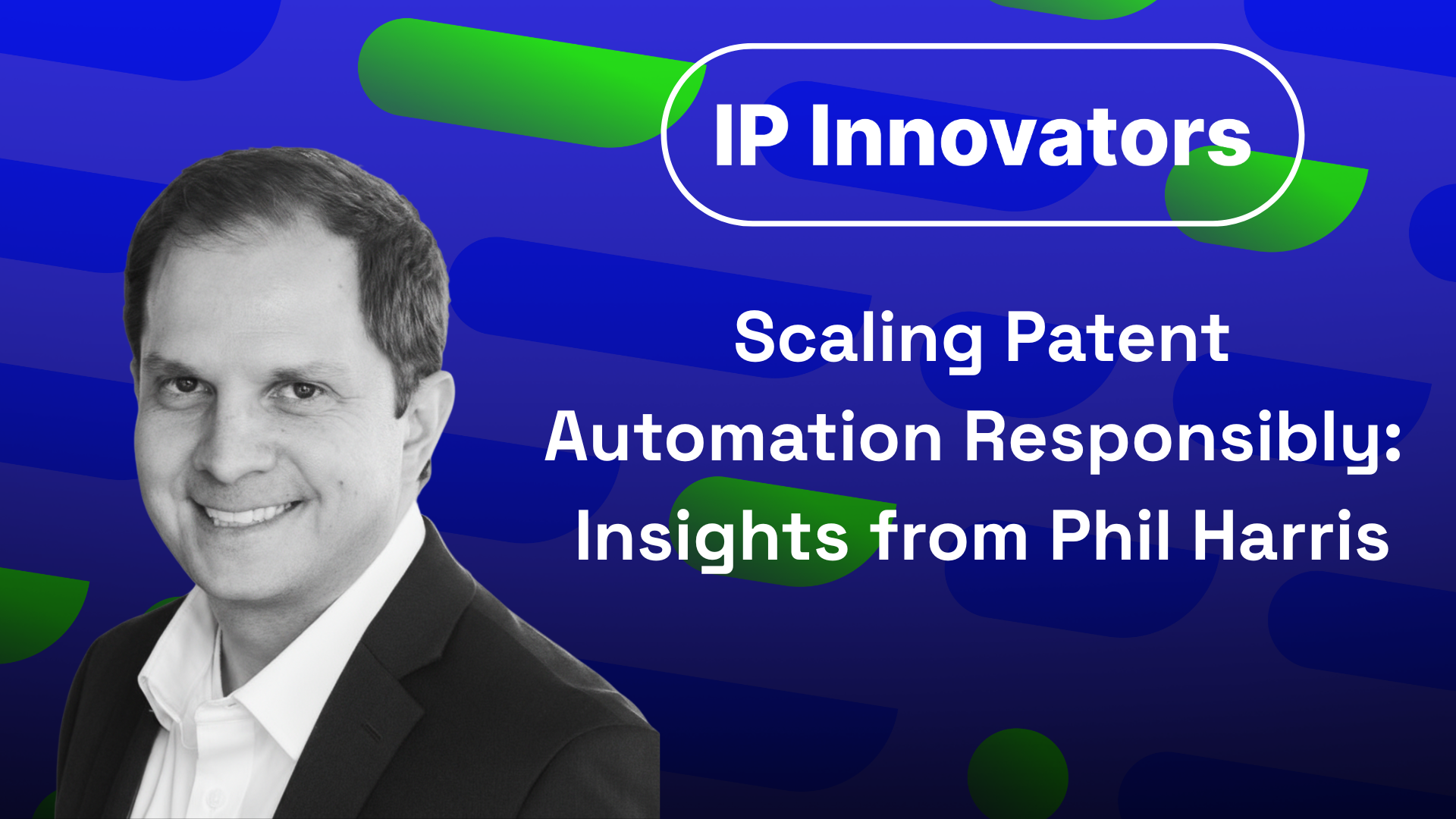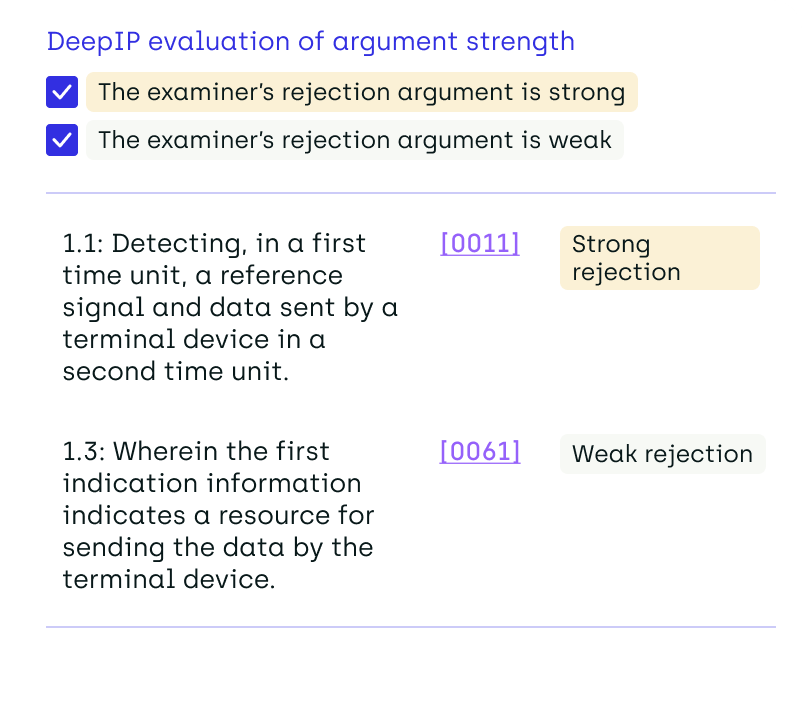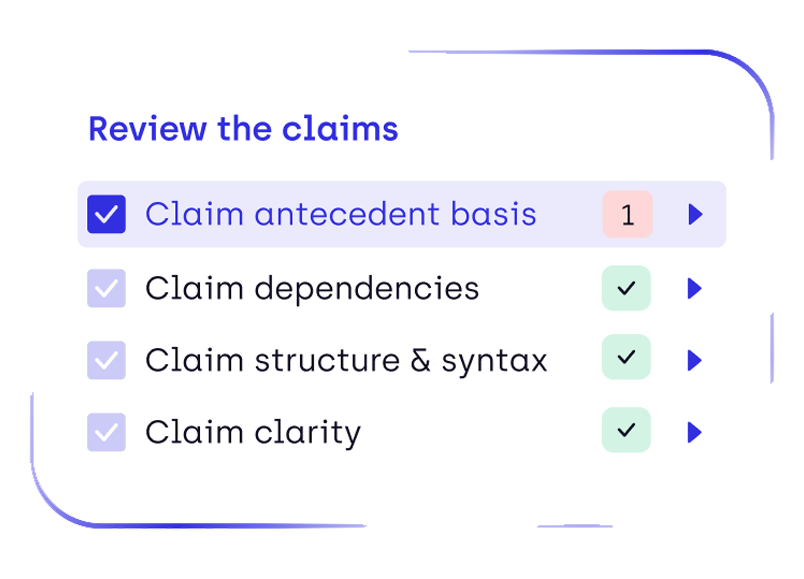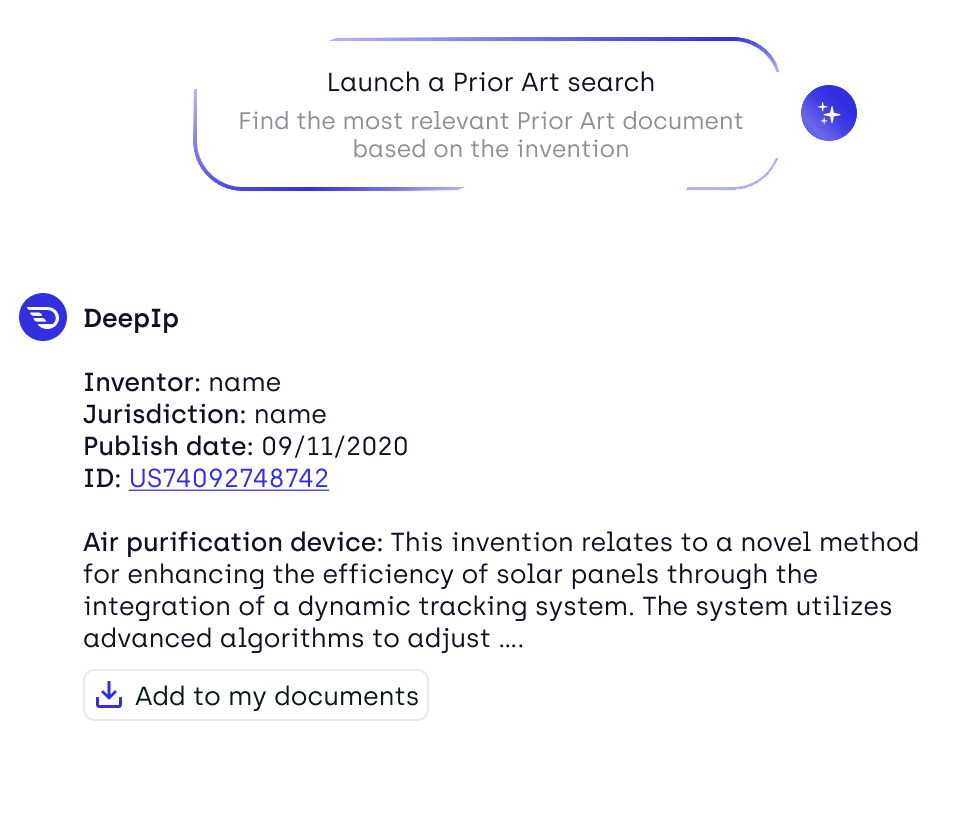The rise of patent automation and AI has transformed how IP professionals draft, review, and manage filings. But as legal workflows become increasingly data-driven, one question remains: how can law firms and patent teams scale AI tools without losing the human oversight that ensures quality and trust?
For Phil Harris, Equity Partner and Patent Practice Group Leader at Holland & Hart, the answer lies in balance.
“There are a couple areas with more automated type tools that do tasks that a person can do by themselves, but will just take more time and more energy or just increase the cost,” Harris said in our last episode of the IP Innovators podcast. “One of those is having bots that will save different emails into our document management system rather than a person going and grabbing that email and saving it over and labeling it in a certain way.”
That small example captures the promise of patent automation done right: it saves time, removes friction, and empowers practitioners to focus on higher-value work—without removing them from the process entirely.
Building a Foundation for Law Firm Innovation
Every patent group has repetitive tasks—IDS filings, office action responses, or reporting communications. Before introducing AI, Harris believes teams must first build a foundation of consistency and repeatability.
“A bunch of different practitioners thought to ourselves, ‘How can we do this better?’” he recalled. “We’re steeped in technology… how can we leverage some of that technology to help us?”
Harris and his colleagues began small: automating internal templates, standardizing client correspondence, and developing scripts for tracking references. Those early steps toward law firm innovation established the groundwork for more complex AI in patent applications down the line.
Balancing Build vs. Buy in Legal Tech
For most law firms, a key strategic decision is whether to develop technology in-house or adopt external solutions—a classic build vs. buy legal tech dilemma.
“It’s a little bit of a case by case, depending on the application and depending on the tool,” Harris explained.
His team assesses ROI by weighing the time saved via automation and the cost difference between an in-house solution or a partner tool.
Harris’s approach reflects a pragmatic hybrid model—building internal tools that directly serve their workflows while integrating third-party platforms where scalability and reliability matter most.
Industry research increasingly shows law firms moving from pilot projects to broad deployment of LegalTech—often blending internal innovation and trusted external platforms rather than relying on a single-source strategy.
As LexisNexis notes, “Law firms are moving beyond experimentation to large-scale implementations” of genAI and automation tools across practice areas.
The Case for Human-in-the-Loop AI
As AI adoption accelerates across law firms, human-in-the-loop AI is becoming the benchmark for responsible implementation. Harris is clear that no technology can fully replace practitioner insight.
“Smaller, more bite-sized things often lead to a little bit of help,” he said, “but that still requires the architect—the practitioner architect—to help put all those building blocks together in a way that works well.”
By combining human judgment with machine efficiency, patent teams can achieve higher throughput without compromising accuracy. This balance—automation guided by human expertise—ensures that ethical, technical, and strategic decisions remain in expert hands.
5 Key Tips for Scaling Patent Automation Responsibly
Drawing from Harris’s insights and broader trends in AI in patent law, here are five practical strategies for firms implementing automation today.
1. Standardize first
Build repeatable workflows before introducing AI tools.
2. Adopt hybrid systems
Balance in-house innovation with trusted third-party integrations.
3. Keep humans accountable
Use automation to enhance, not replace, expert judgment.
4. Measure and refine
Treat every new AI tool as part of a continuous improvement cycle.
5. Prioritize trust
Ensure compliance, explainability, and security in every workflow.
The Trust Layer of Patent Automation
The industries in which patent attorneys serve evolve faster than ever. Harris believes continuous learning is critical to keeping pace.
“If you just rely on the knowledge base that you have and say, ‘I know everything out there,’ you’re not going to capture the nuances or scope that somebody on the leading edge would ask,” he said.
Treating patent automation as a living system—one that adapts alongside technology—ensures that law firms stay relevant to the industries they protect.
However, no matter how advanced the technology, clients expect discretion, reliability, and results. For Harris, innovation isn’t about speed—it’s about control.
“How can we do this better?”
That question guides Holland & Hart’s commitment to secure, auditable automation. By embedding tools within local environments and limiting data exposure, they’re proving that progress in AI for patent law can be achieved responsibly—without sacrificing human oversight or client trust.
For patent professionals, the takeaway is clear: the future of IP belongs to those who can scale technology without surrendering the judgment, ethics, and creativity that define their craft.



.png)




